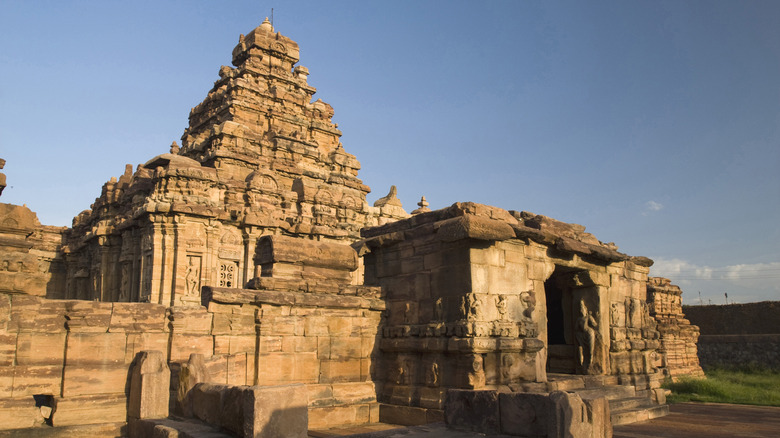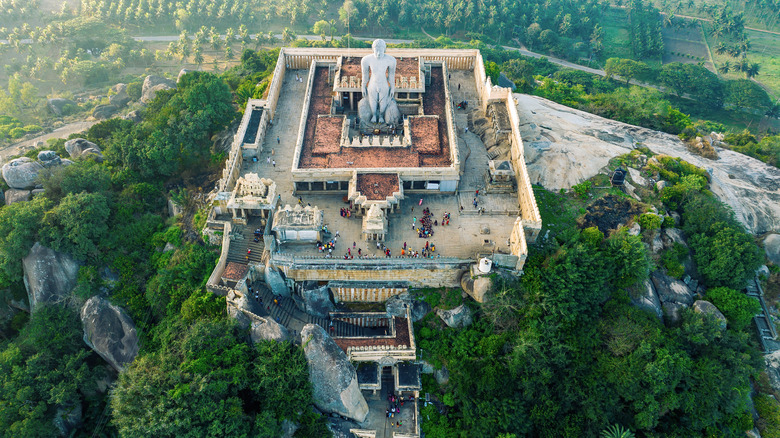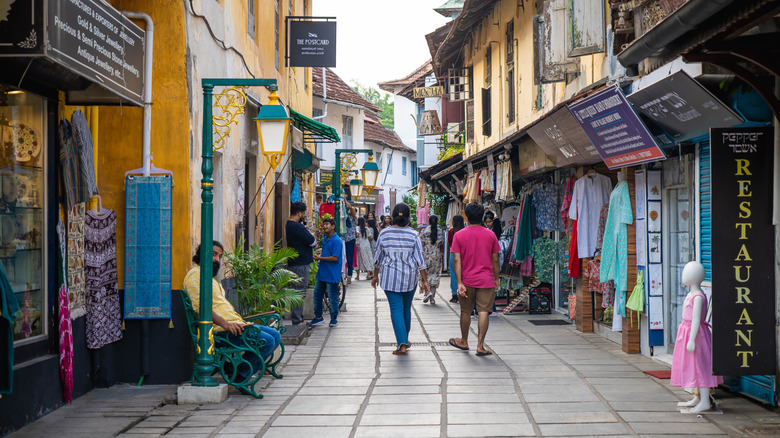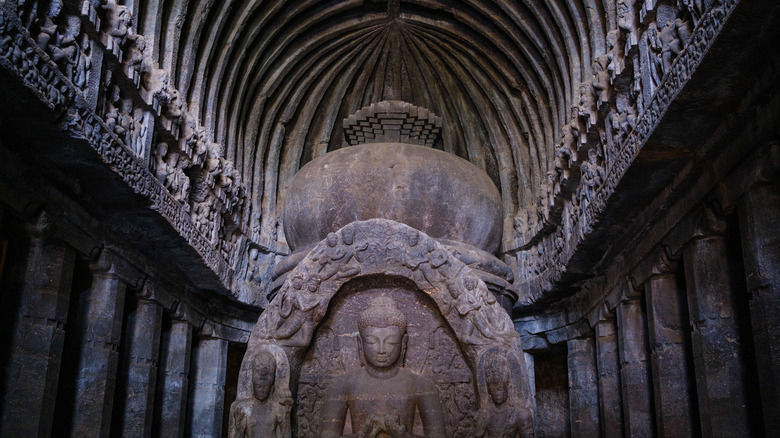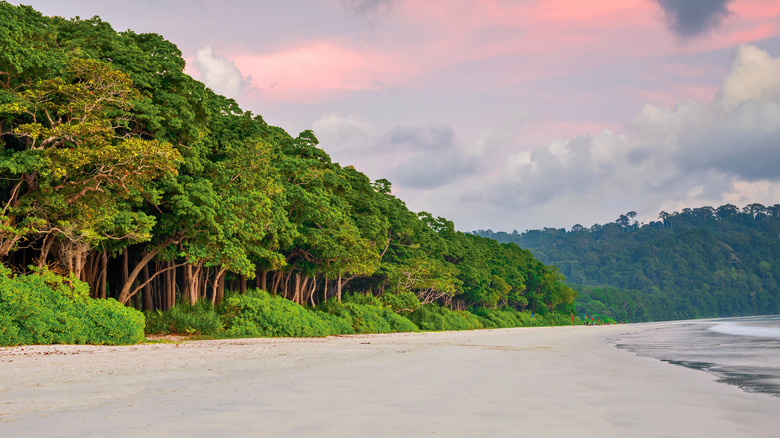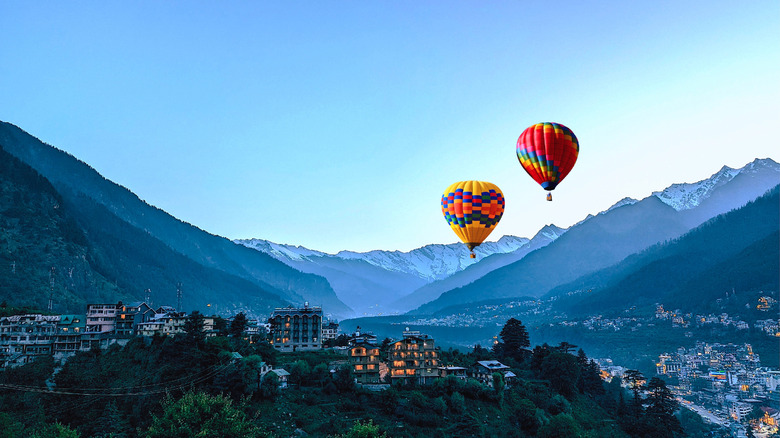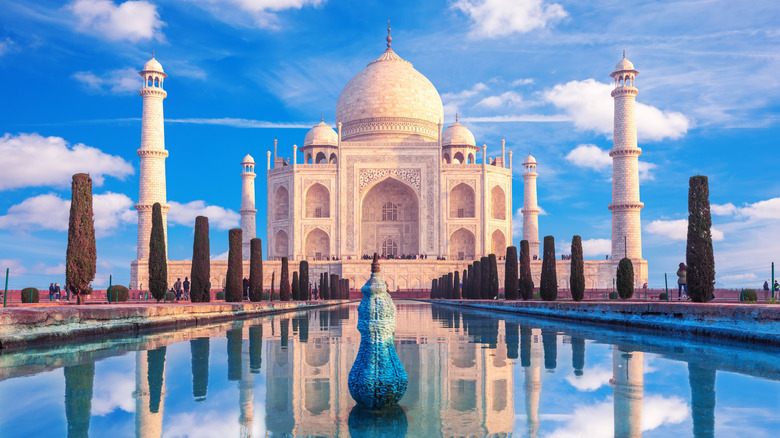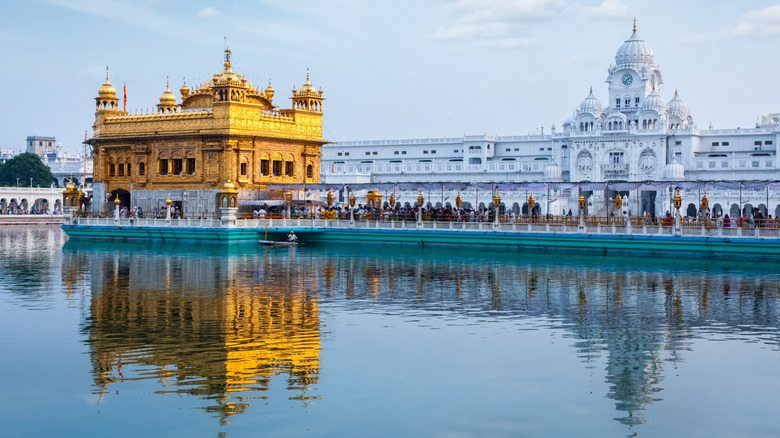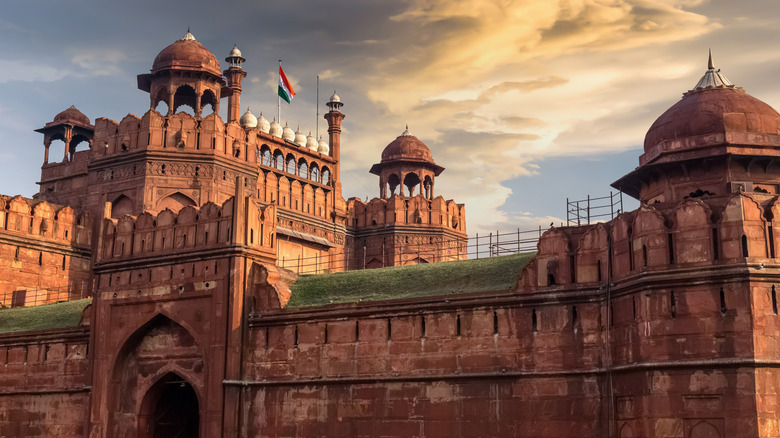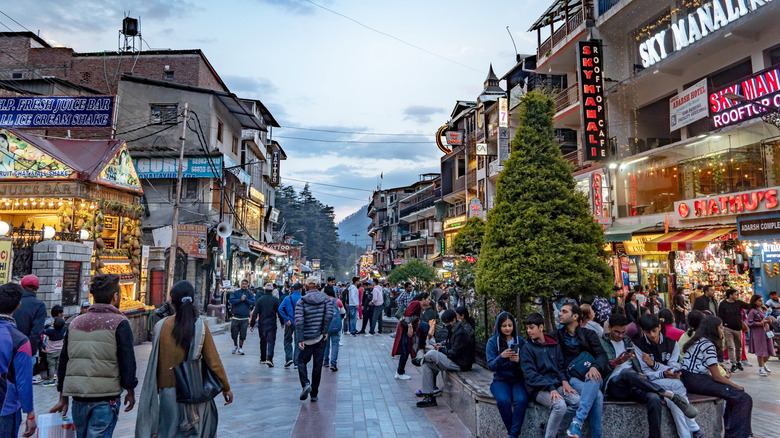India's 10 Best Destinations To Take Beautiful Pictures
Some people travel to see the sights, but photographers travel to eternalize them. And, it's hardly a secret that India is one of the best countries in the world to take pictures. Whether you are interested in capturing the essence of a bustling street or a powerful monument, the Golden Sparrow can deliver. With seven breathtaking mountain ranges, a coastline that stretches 6,896 miles long, and some of the world's most meaningful historical monuments, India offers photographers unparalleled access to some of the most diverse images on Earth. The only problem? It can be difficult for travelers to know where to begin.
To help provide you with a starting point , we've done a deep dive into the best places to take pictures in India. By perusing hundreds of visitor reactions on sites like Google reviews, Tripadvisor, and Reddit, we have narrowed down our list to 10 key destinations. These places stand out for their unique blend of aesthetic beauty and cultural significance. All in all, we have compiled a list that reflects India's rich history, architectural beauty, and diverse geography.
The Virupaksha Temple, Hampi
To discover prime travel locations, it often helps to ask the locals. And, according to at least one India-based photographer from our research, you really shouldn't leave the Golden Sparrow without snapping some shots of the country's traditional buildings. Enter Virupaksha Temple. Located in the ancient riverside town of Hampi, this trio of stunning stone towers dates back to the 7th century. Covered with ornate stonework and stretching 160 feet into the sky at its highest point, the structure strikes an interesting balance between elegant details and striking size. Photo lovers particularly enjoy capturing Virupaksha Temple's image at nighttime — when it stands illuminated against a backdrop of Hampi's famous UNESCO World Heritage-recognized ruins.
To visit this fantastic photographic location, visitors can drive 30 minutes from the Hosapete Junction train station or an hour from the Jindal Vijaynagar Airport. Just be aware that Virupaksha Temple remains an active Hindu religious site. With this in mind, remember how to be a respectful tourist while visiting India and limit your pictures to the actual architecture, and avoid photographing people worshiping. Additionally, don't forget that, while entrance to the temple is free of charge, taking pictures will come with a fee. Out of consideration for those around you, be sure to pay what you owe in a kind and graceful manner.
Vindhyagiri Hill, Shravanabelagola
Vindhyagiri Hill in Shravanabelagola is more than a stunning geographic formation. It is also an important Jain pilgrimage site, complete with a temple and a towering Gomateshwara statue. When it was first constructed in the year 981 C.E., the Gomateshwara statue was likely the tallest statue of its kind. Towering 59 feet in the air, it stands as one of the world's most impressive sculptures. Surrounding it stands an elaborate temple, which can only be accessed on foot. Indeed, visitors are expected to climb hundreds of steps to reach the temple. The result is a beautiful opportunity to snap photographs of everything from the stairs to the temple to the mountains themselves.
During your visit, please be aware that the statue holds great religious significance for those who practice Jainism. With this in mind, be respectful of other visitors and focus your photography on viewpoints, buildings, and nature — rather than on the pilgrims. Although visiting is free and taking pictures is allowed, big group pictures and loud posing may not be welcome. There may also be some limits on photographing the Gomateshwara Statue, as the Karnataka Department of Tourism warns against photographing deities. If you are ever in doubt, please ask local authorities for clarification. That being said, the photographers and videographers who have previously visited say that capturing this important cultural site is a pleasure. To arrive at Vindhyagiri Hill, expect to drive almost just under three hours from Kempegowda International Airport.
Fort Kochi, Kochi City
The historic Fort Kochi neighborhood of Kochi City, India is a true visual gem. Thanks to its unique history, the area blends cultural and architectural styles to create an urban landscape that stands out from the rest. In the 1100s, the area underwent a transition, as the Kulasekhara Empire fell and the Cochin State was erected in its place. Before long, its high-quality tea markets had transformed the city into an attraction for merchants from Rome, Syria, China, and beyond. The Portuguese arrived in the 15th century and established Fort Kochi as the first European-controlled area in India. Since then, the region has been controlled by Dutch forces, a Mysore king, and the British Empire.
These days, visitors can wander the streets of Fort Kochi and photograph the unique combination of international architecture. Photographers should prepare their cameras to capture everything from the Portuguese Mattancherry Palace to the British Cochin Club gentleman's club, to the stunning Jain temple. The ambiance is vibrant and lively, with rickshaws bumping down the streets and local vendors selling everything from fresh fish to cups of piping tea.
Interestingly, though, at least one photographer who has captured Fort Kochi says not to obsess over snapping that perfect frame. The area is apparently ideal for taking the sort of pictures that force the person behind the camera to take their time and observe the world around them. To arrive at Fort Kochi, drive one hour from Cochin International Airport.
Ellora Caves, Verul
India was nominated the world's best destination for solo travel, and it's not hard to see why. The country's rich cultural heritage allows visitors to dive deep into sites of historic beauty. Chief among them? The Ellora Caves. Recognized as a UNESCO World Heritage Site, the Ellora Caves are a series of 34 religious sites that have been carved into a high basalt cliff. Over the course of a 1.2-mile walk, visitors can peer inside the caves and experience sites that are dedicated to a number of different traditions, including Buddhism, Jainism, and Brahmanism. Because of the rich artistry that characterizes these locations, photographers are able to capture gorgeous pillars and dramatic archways. Previous visitors recommend taking your camera in the morning before the location draws too many crowds.
Because the Ellora Caves are a religious site, the basic rules of respect apply. Try to remember that different caves may have different rules when it comes to photography. While some permit photos, others may not. Most restrict videos and flash photography. Depending on whether or not you'd like to take a video, you may be subject to a ₹25 fee in addition to the ₹40 charged to visitors from SAARC and BIMSTEC countries, which comes to less than $1. Visitors from outside these regions must pay ₹600 (just under $7) to see the Ellora Caves. Note that commercial photography requires permission. To get there, drive a little over an hour from the Aurangabad Airport.
Radhanagar Beach, Havelock Island
India may be famous for vibrant cities like Mumbai or New Delhi, but that doesn't mean that The Golden Sparrow lacks stunning natural areas. In fact, India is home to some glorious islands – including the romantic Havelock Island. Covered in jaw-droppingly large trees that contribute to an ambiance of pure greenery, this island is a fantastic place to enjoy beaches in their peaceful, natural state. Locals say that Radhanagar Beach is one of the loveliest to behold. Their reasoning? Its turquoise waters and crisp beaches overflow with vibrant colors. As an added bonus, Radhanagar Beach lacks the sky rises and discos that you might find on the beaches of bigger cities — earning it an international Blue Flag recognition for its natural beauty and environmental conservation.
For a nature photographer, Radhanagar Beach is essentially a dream-come-true. The clear water, deep green trees, and pale sands combine to create the type of color contrast that characterizes some of the best photos. What's more, the ever-changing light over the beach is perfect for capturing the Andaman Sea in its various states. As it faces south, this beach is the ideal place to shoot images of sunrise and sunset. There are no photography restrictions at Radhanagar Beach, but, as always, be respectful of fellow beachgoers. To arrive, you must drive 20 minutes from the Havelock Jetty.
Nalanda University, Rajgir
When you think of the oldest universities in the world, what names come to mind? If the University of Oxford in England and the University of Bologna in Italy are at the top of your list, you wouldn't be alone. But five centuries before these key European institutions came to life, there was another university at the forefront of education. Founded in 427 CE, Nalanda in Rajgir, India, is considered the first residential university and once attracted tens of thousands of students from across Asia before it suffered a debilitating military attack at the end of the 12th century. These days, photographers can wander its ruins, snapping photos of high walls, intricate statues, and thick brick pillars. There are plenty of opportunities for pictures of destroyed meditation halls, classrooms, and more.
To visit Nalanda, drive approximately two hours from Jay Prakash Narayan International Airport. Upon arrival, expect to pay an entry fee, with locals gaining access to a special lower price. While photography is allowed on the old campus, rules do apply. To take videos, you may need to pay an extra fee. Photographers looking to take commercial shots must request a permit before walking the campus, and those hoping to use drones and tripods must get in contact with the Ministry of Tourism prior to their visit. Previous visitors have been very eager to share their pictures of this archeological goldmine and the nearby greenery.
Himalaya Mountain Views, Manali
Landscape photographers who love dramatic mountain peaks should consider heading to the town of Manali. A hill station(a town built on a higher stretch of land than the surrounding area), Manali is a type of mountain resort where visitors can embrace the hills at their fullest. The town offers spectacular views of the Himalaya mountains in addition to access to numerous forests and fresh water brooks. Wander this stunning destination and snap photos of all that Mother Nature has to offer. To get a particularly unique perspective, you can even ride a hot air balloon over Manali and photograph the town from below. The town's bustling shopping district — known as Mall Road — also makes for excellent photographs, thanks to its lively atmosphere full of vendors and well-lit buildings.
Generally speaking, photographs in Manali are permitted. However, visitors should be aware that cameras are prohibited in certain areas. Never snap pictures at military structures, borders, or dams. Know that some tribal regions also restrict photographs, so it's best not to take pictures of these areas without explicit permission. If you ever harbor any doubts about local rules and regulations, direct your questions to the appropriate authorities. To get to Manali, drive two hours from Bhuntar Airport in Kullu.
Taj Mahal, Mumbai
The Taj Mahal in Mumbai is not just one of the best places to take photos in India but also in the world. The white mausoleum with sky-high pillars and a gorgeous domed ceiling has attracted photo lovers from all across the globe. Princess Diana, Jacqueline Kennedy, and Oprah Winfrey have all posed in front of its intricate white exterior. Commissioned in the 17th century by the emperor Shah Jahan, this structure stands as an homage to his wife, Mumtaz Mahal, who tragically died in childbirth. This heart-wrenching story has given the Taj Mahal a reputation for being one of the most important symbols of love and mourning. The combination of this symbolism and the structure's elegant architecture makes it a meaningful and beautiful place to take pictures.
Before you visit the Taj Mahal, however, be sure to review the destination's photo policy. While pictures are allowed on the premises, you cannot take pictures inside the mausoleum. This means that you can get a great shot of the building towering over the reflecting pond, but not of its inner walls. Phone camera photographers should be extra careful to turn off the ringer during daytime visits. They should also be aware that phones are prohibited from night viewings. Traditional cameras are much more welcome at this site, as these are welcome at daytime and nighttime visits — granted that they pass a security check — while drone photography is completely banned.
Golden Temple, Amritsar
If the idea of a building that is covered in gold plates sounds a little far-fetched, you may need to check out the Golden Temple in Amritsar, India. Construction began in the 16th century, and it was covered in 24-karat gold leaf in the 19th. This beautiful structure stands as an especially significant Sikh religious site. Every year, devout practitioners of Sikhism complete a pilgrimage to the Golden Temple. But beyond the building's cultural importance lies its architectural wonder. Its foundation was designed to jut out into the Amritsar Sarovar (Pool of Nectar) — which is considered sacred — and to stand below the level of the nearest land. This unique way of symbolizing humility stands as the perfect template for a unique photograph. After all, the light on the golden structure, the reflection of the temple in the sarover, and the low point of its construction all make for a fascinating and meaningful shot.
To arrive at the Golden Temple, drive for half an hour from the Sri Guru Ram Dass Jee International Airport in Amritsar. Upon arrival, be aware that this is an active religious site and that the vast majority of people who enter the Golden Temple are there for spiritual purposes. With this in mind, we recommend that people who are approaching this destination from a touristic perspective remain outside of the temple. This holds especially true for photographers, as there are no pictures allowed inside the Golden Temple except under special circumstances, for which you must seek approval. Despite this, the outer temple stands as a photographic delight, thanks to its architectural beauty.
Red Fort, Delhi
If you are searching for a new addition to your history buff bucket list, look no further. The Red Fort in Delhi stands as one of the most fascinating historical sites in India — and it looks pretty extraordinary in photos, too. Dating back to 1546, this structure holds an entire complex of palaces, gardens, and pavilions. Regardless of whether visitors hope to take pictures of large, looming lines or smaller details, there's something here for everyone. Indeed, photographers can capture images ranging from the intricate designs on expertly crafted doorways to the wide arches that frame recreational areas.
Although photography is permitted at the Red Fort, some restrictions may apply. Drones are banned from the fort's premises, and you may be asked to avoid using a flash in some instances. Guests who are invited to special events at the Red Fort may also find that they cannot bring their cameras into the building for security purposes. That being said, most amateur photographers will have no problems snapping photos at this lovely spot. To visit, adult foreigner ticket prices cost ₹550 online or ₹600 cash (less than $7), although admission for visitors from BIMSTEC countries and other nearby countries costs only ₹50 online or ₹35 cash (less than $1). To get there, drive 40 minutes from Indira Gandhi International Airport.
Methodology
Choosing the 10 best places to take pictures in India was an exciting challenge. Because India is such a diverse country, we tried to design a list of recommendations that included everything from the historic city streets of Fort Kochi to the opulent construction of the Red Fort to the ancient ruins of Nalanda University. Vibrant religious sites like the Golden Temple and Vindhyagiri Hill also made the list, as the exterior beauty of these structures has drawn admiration for centuries. Of course, we also wanted to highlight India's natural beauty. With this in mind, we selected the Himalaya Mountain views in the town of Manali as well as the pristine waters of Radhanagar Beach on Havelock Island. Many of these recommendations came from locals who reviewed them on sites like Tripadvisor, Google, and Reddit.
While making this list, we were also conscious of local rules surrounding photography. Thus, we were sure to explain the restrictions and fees surrounding each of these places. Several popular destinations were excluded from our recommendations due to some locals' sentiment about photography. Others, like the iconic Taj Mahal, Golden Temple, Vindhyagiri Hill, or the UNESCO-recognized Ellora Caves, made the cut despite numerous restrictions, as the places that can be photographed are remarkably beautiful.

